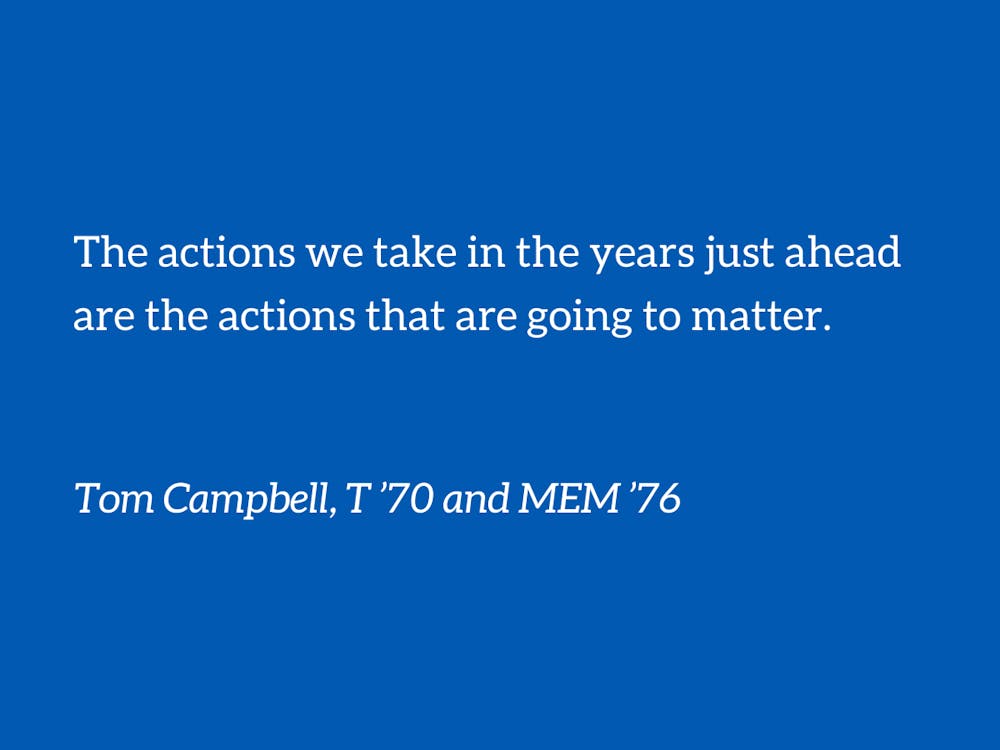Duke is to be commended for taking some positive actions toward reducing its greenhouse gas emissions in recent years. The university’s greenhouse gas emissions are now 31% lower than they were in 2007, and when new off-campus solar arrays come on-line in the coming year, they will be almost 50% lower.
So far, so good. But it is disappointing to learn that the target date for Duke’s next set of climate goals will be 25 years in the future — 2050.
Simply put, when it comes to our climate, 2050 is far too late.
2024 is on track to be by far the hottest year on record, surpassing the record just set in 2023. Preliminary findings by an international team of researchers show that carbon absorption by land — soil, plants, forests — essentially collapsed last year. Not surprisingly, scientists tell us that the pace of global warming is accelerating. The latest UN Climate report, published on October 24th, says that “We are in the midst of a climate emergency, and the window to act is closing fast.” In an article published on October 8th in the journal of the American Institute of Biological Sciences, the authors flat out say that “We are on the brink of an irreversible climate disaster.”
In a situation like this, the actions we take in the years just ahead are the actions that are going to matter. If we continue to blow through climate thresholds, it may well be impossible to maintain a livable environment on much of our planet.
It is worth noting that right here in Durham, our local governments have set climate goals for themselves that are much more ambitious than Duke’s. The City of Durham and Durham County have committed to transitioning their operations to 80% clean, renewable energy by 2030. And even the woefully underfunded Durham Public Schools have committed to going 80% renewable by 2035. And on the academic front, Middlebury College’s core campus — which is admittedly a good bit smaller than Duke — will be fueled 100% by renewable energy by 2028. (Middlebury’s president, Laurie Patton, was Dean of Arts and Sciences at Duke before she became Middlebury’s president in 2015).
It’s probably too late for Duke to set the same climate goal as Middlebury. But why can’t Duke up its game and set the same goal for itself as our local governments have? Commit to transitioning its campus operations to 80% renewable energy by 2030.
To reach a goal like this, one thing that Duke would have to do is get over the phobia it seems to have about allowing visible solar panels on its campus. Roof tops and parking lots are everywhere, but there’s hardly a solar panel to be seen. One glaring example is the south-facing Southgate dorm on East Campus, which had a new roof installed just last year. Solar panels on that roof would generate quite a bit of electricity and announce to everyone driving by on Durham’s Main Street that Duke was serious about renewable energy.
Solar panels and battery storage have been getting cheaper and more efficient year after year. Duke can take advantage of this, and of the promising new field of geothermal energy, and make some significant changes to its energy mix in the next few years
So come on Duke, let's get down to it. You're playing in the World Cup, it's getting late in the second half and we need you to score some goals to help us win this game. There's not going to be any overtime. Set a climate goal that matters — 80% renewable by 2030 —and do what you need to do to achieve that goal.
Tom Campbell (T‘70, MEM ‘76) was a former editor for The Chronicle and a former member of the Durham City Council. He is currently a member of the Durham City-County Environmental Affairs Board.
Get The Chronicle straight to your inbox
Sign up for our weekly newsletter. Cancel at any time.

